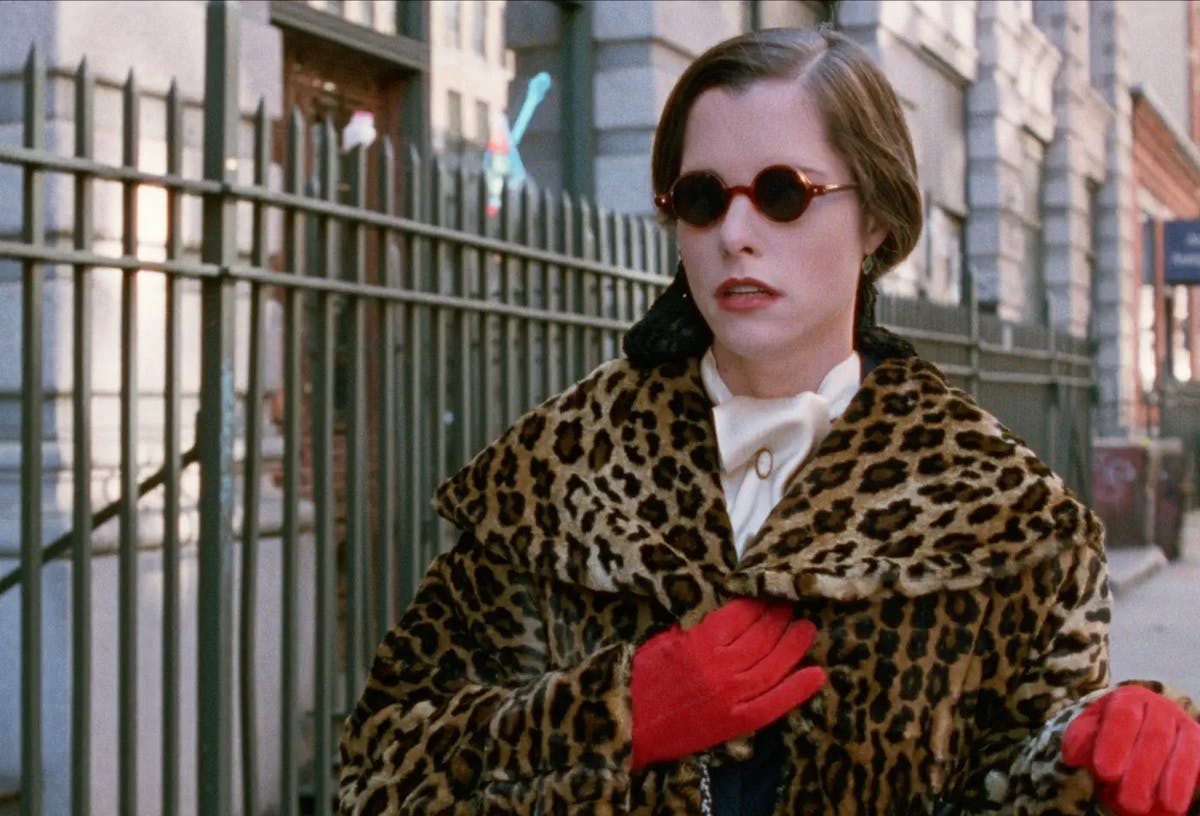Bursting With Wit, Verve, and Color, ‘Party Girl’ Revels in the Hipster Demimonde of 1990s New York
The insouciant comedy is ripe for re-evaluation, especially for Parker Posey’s enduring portrait of a feckless, ridiculous, rude — and yet altogether charming — young woman.

“He-he-hello!” If you lived at New York City in the nineties, or were city-adjacent, you may remember this particular greeting, especially if you hung out with club kids or frequented hip watering holes like Bar d’O. Kooky and campy, the salutation was popularized by the movie “Party Girl,” that 1995 indie cinema classic featuring Parker Posey’s first starring role. Now being revived at the IFC Center in a new 4K restoration, the comedy is ripe for re-evaluation, particularly as Gen-Xers (like myself) grapple with our legacy and move further into the middle of middle-aged.
Inspired by the love Mary, Ms. Parker’s character, has for organization, a brief but thorough plot summation is in order: the movie opens with twenty-something Mary’s arrest for illegally operating a social club in her Chinatown apartment. With no other family to help her, she calls up her godmother Judy, who bails her out and offers Mary an entry-level job as a clerk in the library she oversees. Mary reluctantly agrees yet continues to go out and party most nights. At the same time, Mary’s DJ friend Leo, who has no place to stay, comes to live with her.
After breaking up with her loutish boyfriend Nigel, she pursues a relationship with food vendor Mustafa. Indignant over Judy’s constant admonishments, Mary begins to dedicate herself to learning the Dewey Decimal System. She even classifies Leo’s extensive record collection. One night, though, Mary forgets to close the windows of the library and several out-of-print books are destroyed by rain. Judy fires her, and Mary returns to party-planning by staging a warehouse rave. After a disastrous night, she wakes up the next day determined to continue her career in library science and secure Judy’s help. From here, any moviegoer can guess how it ends.
So does “Party Girl” hold up as a sprightly entertainment? The answer is pretty much confirmative, with the overall movie still bursting with wit, verve, and color. Certain scenes are worth highlighting, such as when Mustafa laments how his falafel-selling non-Arab competitors use toothpicks, and when Mary tears into a library patron for placing a book back onto a random shelf. Fans of bygone New York will love spotting places that no longer exist, like Keith Haring’s Pop Shop, and ubiquitous downtown denizens of the ‘90s like Lady Bunny and Natasha Twist. The dance soundtrack, mostly house music, and Mary’s fashion choices delight as well.
The main performances, too, pop as if they were just placed in a microwave and not left to stale over the ensuing 28 years. As Leo, Guillermo Díaz endears with his enthusiasm and naivety, no more so than when he flubs a transition from one record to another (a major faux pas for professional DJs) because he’s just spotted a beautiful go-go dancer. A longtime NY actress who died in 2000, Sasha Von Scherler, director Daisy von Scherler Mayer’s mother, imbues the character of the tough librarian godmother with both warmth and wrath — and not a little absurdity, which the movie requires.
No discussion of the movie’s acting can exclude the appellative “Party Girl.” Featured in nearly every scene, Ms. Posey behaves, and looks a bit, as if she’s a modern, more irreverent, more hep Hepburn (Katherine), with a dash of Audrey circa “Breakfast at Tiffany’s” thrown in for extra urbanity and chicness. Cleverly, Ms. von Scherler Mayer harnessed the young actress’s innate idiosyncrasies of gesture and bearing to create an enduring portrait of a feckless, ridiculous, rude — and yet altogether charming — young woman.
Where the movie conflicts with our contemporary sense of propriety and taste is in its reveling in Mary’s ignorance and entitlement — some might say they were offended back in 1995. There’s not one but two scenes in which she attempts to dance the traditional dances of Arab women, complete with a mock veil. Moreover, the large Kasbah-themed party she throws smacks of appropriation, and though Mustafa rebukes Mary for her general pomposity, he never takes her to task for her cultural cluelessness. The movie almost seems to be on her side when Mary says, “It’s a party god-damn-it.”
Maybe Mary and the movie are right. Maybe young people should always be allowed to push against what’s socially acceptable, and permitted not to take all things seriously. It’s a joy at the movie’s end when Mary is forgiven all her transgressions by her friends, lovers, and godmother. And maybe that’s what we Gen-Xers have given younger generations: a sense of how one shouldn’t sweat the small stuff, especially since the stuff can be turned into glitter for a fabulously flippant party.

